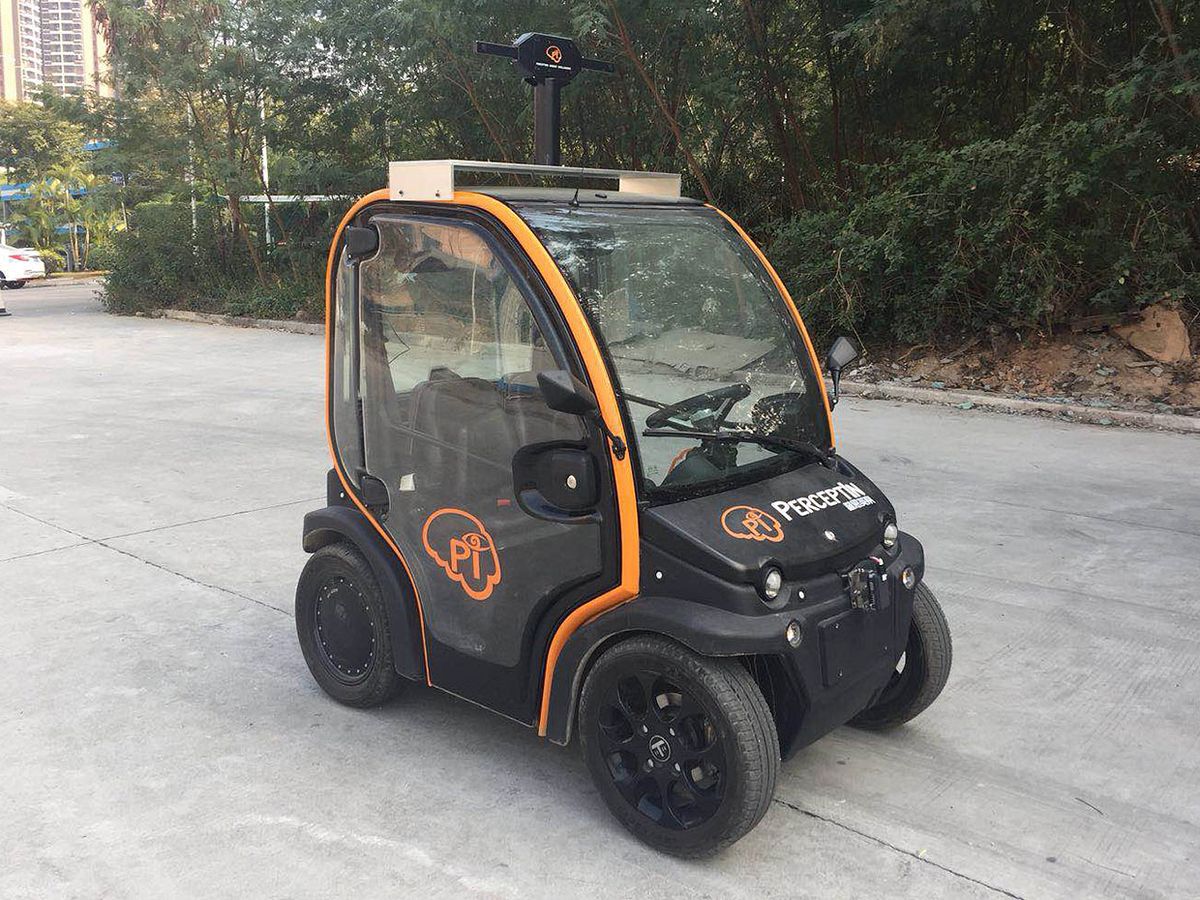A self-driving vehicle can avoid a lot of problems by just going slowly. A slow bot hurts a lot less when it hits you, and cheap sensors are good enough when you don’t have to see far to avoid a collision.
And cheap is more than a feature, it’s a strategy. Make a costly product cheaply, and it’s not the same product—just look to the supercomputer in your pocket that calls itself a phone.
That’s the idea behind Perceptin, a little startup founded in 2016 by Shaoshan Liu, who got a Ph.D. from the University of California at Irvine and then worked for a decade at the U.S. branch of Baidu. Liu asked himself just how much robocar he could build on a shoestring, and made the task easier by specifying a top speed of 20 kilometers per hour (12 mph).
“Our manufacturer in China can make these EV cars for under US $5,000, says Liu. Throw in the software and other necessities, he adds, and the total manufacturing cost should stay below $10,000.
And what do you do with slow bots that can’t manage street traffic, let alone highway speeds? You fence them within the sheltered parks of university and industrial campuses, where nobody minds if you brake for squirrels. It’s a narrow market niche, but big enough for a startup.
“Look through China and there’s thousands of campuses, for universities and companies—probably a million-unit market,” Liu says.
Perceptin now has five bots serving its first customer, ZTE. Yep, that’s the Chinese telecom company that’s lately been at the center of U.S.-China trade disputes. ZTE has an enormous campus in Shenzhen.
Each bot packs four high-definition cameras, four midrange radar sets, and 10 ultrasound sensors, as well as GPS and sensors for wheel odometry. That’s a fancy name for counting how many times the wheels go round, and by itself it can locate the vehicle to within about 20 centimeters. The radar can see up to 50 meters ahead, and the ultrasound is good out to 5 meters. Those capabilities wouldn’t be nearly good enough for the likes of Waymo, but they’re fine at campus speeds.
The cameras work in stereoscopic pairs to provide a three-dimensional “point cloud.” That’s a phrase normally associated with lidar, the Cadillac of sensors, but lidar is precisely what Perceptin does without. “We get a snapshot of the environment at 30 frames per second, and it’s panoramic, with spatial information that enables us to localize ourselves,” Liu says.
Not all the robocar action will unfold on streets and roads. And, if it’s this easy to carry people around campuses, how much easier would it be to bring them pizza?
Philip E. Ross is a senior editor at IEEE Spectrum. His interests include transportation, energy storage, AI, and the economic aspects of technology. He has a master's degree in international affairs from Columbia University and another, in journalism, from the University of Michigan.



